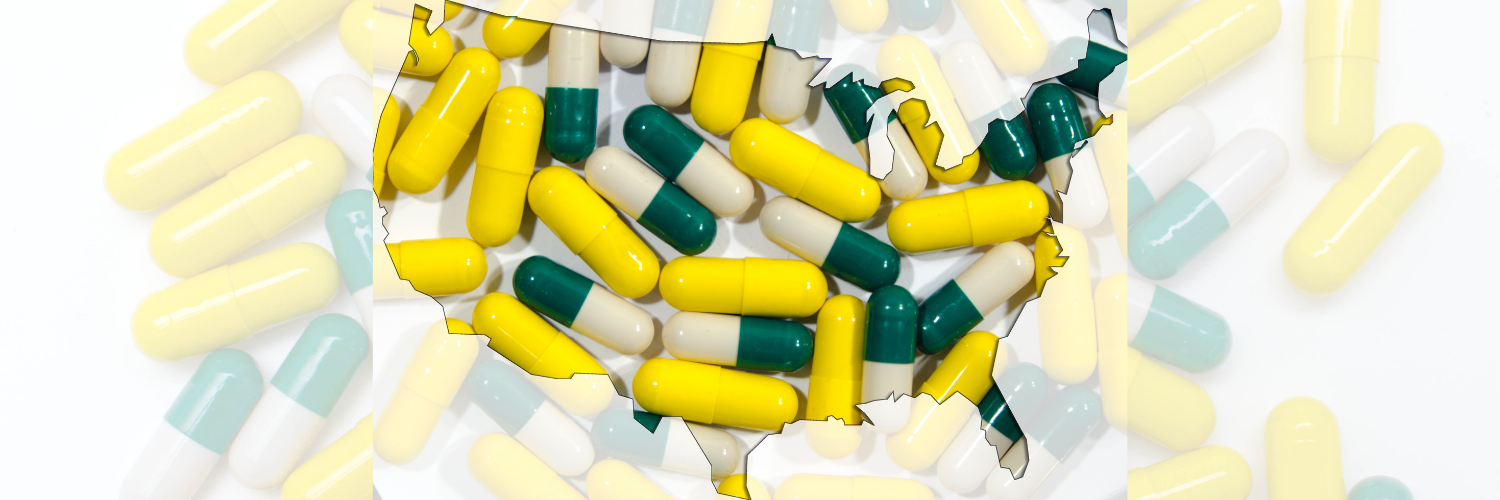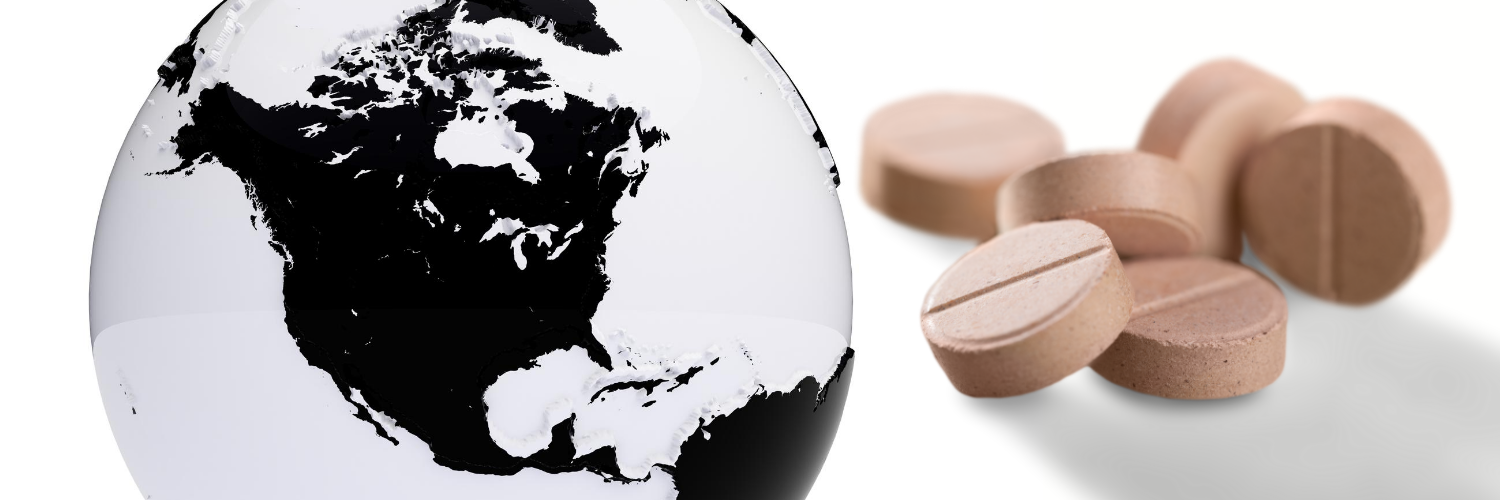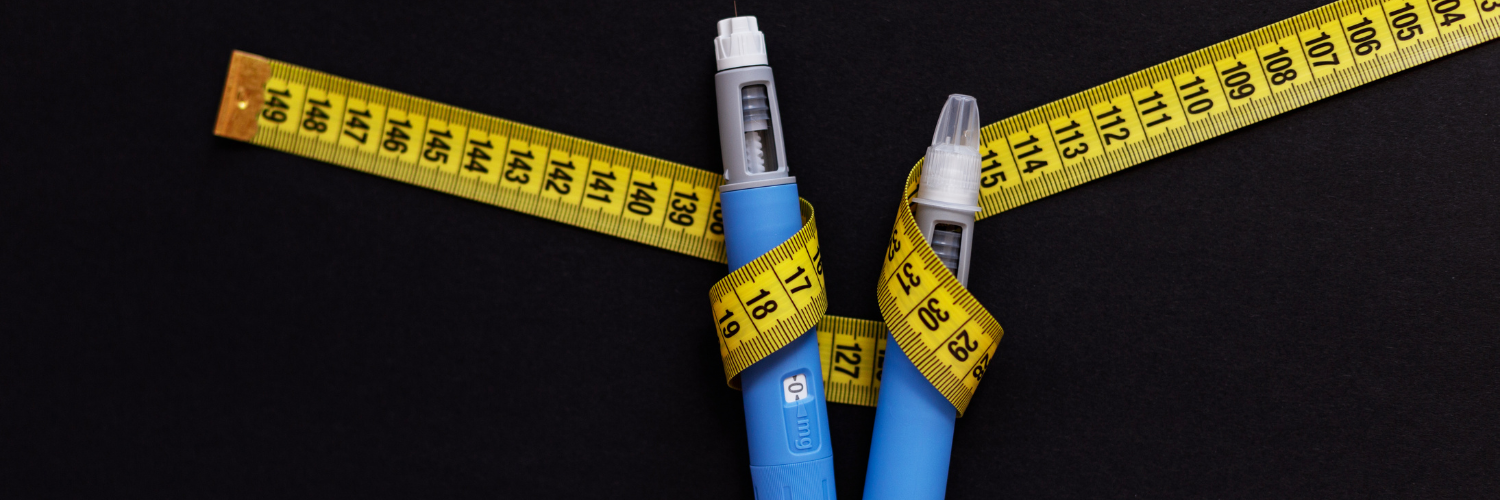FDA Drug Supply Chain Data Remained Unchanged For 20 Years

In 2018, columnist and journalist David Lazarus from the Los Angeles Times wrote about how difficult it was to find out where prescription drugs are made. His article was called, “ Where do prescription drugs come from? Good luck answering that question.” In fact, he wrote that “it’s almost impossible to get a fix on any aspect of the supply chain or manufacturing process.”
We found that it’s not impossible. It’s not rocket science. But it took a lot of research to figure out how to get the right answers and patience to go get them. However, as you can read in the introduction to our report, Not Made in the USA, republished below, we write a lot about how no one else seemed to be looking very hard for these answers, instead relying on hidden or non-existent FDA “data” that remained unchanged for 20 years. Sometimes someone just has to get into the weeds and do the work.
Read the Key Findings of “Not Made in the USA”
Introduction to “Not Made in the USA”
Context and Study Rationale
The U.S. Food and Drug Administration (FDA), the agency responsible for regulating drugs sold in the U.S., does not require drug companies to include a drug’s country of origin on its product label; neither for finished drug formulations (FDFs) nor their active pharmaceutical ingredients (APIs). Although the FDA is supposed to record this information as a condition of issuing a drug license, the information is not readily available to the public, and public record indicates the FDA may not adequately meet its regulatory obligations when it comes to this data. Public availability of country-of-origin information for prescription drugs is important and useful for consumers, public health experts, and centers of oversight, such as the Government Accountability Office (GAO) on matters relating to drug safety, national security, and healthcare spending. It should be of particular interest to policymakers looking toward drug importation as a means to enhance price competition and lower drug prices for Americans.
In the Media: Where is My Drug Made?
Los Angeles Times columnist David Lazarus wrote in 2018 about the lack of transparency when it comes to a drug’s country of origin:
“...it’s often impossible to get a fix on any aspect of the supply chain or manufacturing process. Take a look in your own medicine cabinet. More than likely, not one prescription drug has a country of origin on the label.”[1]
In Health Affairs, from a 2020 post called “We Still Don’t Know Who Makes This Drug,” the authors echo the same conclusion:
“Under current policy, the required labeling of prescription drugs sold in the US does not disclose the name of the actual FDF manufacturer, nor the manufacturer of its APIs. Neither do the labels disclose the location of the drug’s API or FDF manufacturer (although the labeling typically discloses the name and contact information of the company marketing the drug, that is, the ANDA holder.)”
In 2010, then FDA Commissioner Margaret Hamburg, MD, said that 40% of finished drugs sold in the U.S. and 80% of their APIs were imported.[i] Those statistics were used repeatedly without validation or revision for many years. The 80% figure was used by the GAO as recently as 2019.[ii] As far back as 1998, over 20 years ago, the GAO stated that, according to FDA data, 80% of APIs were imported.[iii] These figures are commonly regurgitated in the media,[iv] [v] congressional hearings,[vi] [vii] and academic journals[viii] [ix] as authoritative. Yet there is no ‘hard data’ that the FDA provides to support it.
It may not be the FDA’s statutory responsibility to inform the public about the number of FDA-approved drugs made outside the U.S., but it is important for the public to have confidence in the FDA’s own recordkeeping on this subject.
Public Citizen analyzed trade data from 2019 and found that the three top countries from which bulk pharmaceutical ingredients are imported into the U.S. are China, India, and Mexico. The next top countries from which the U.S. imports pharmaceuticals are Canada, Germany, Italy, the UK, Spain, Israel, and Ireland. Where the volume of the former group is larger, the dollar value of the latter group is much higher.[x] That is explained by the fact that the former group’s products are largely for less expensive generic prescription and OTC drugs and the latter group’s products include many brand name drugs or the APIs to manufacture brand name drugs. While China may lead as the largest supplier of bulk pharmaceutical ingredients, many of those are for over-the-counter products, not prescription drugs, or to make less expensive generic drugs – but seldom for the APIs that go into brand name drugs.
For decades, the public debate about whether to legalize prescription drug importation has presented a false dichotomy. The debate is often framed as whether “to legalize drug importation or not to legalize drug importation.” That’s a false presentation of the law. Drug importation is legal. However, while there are exceptions for personal importation and special authorizations for wholesale importation, commercial (wholesale) drug importation is expressly legal but only if authorized by drug manufacturers. That protected distribution channel allows drug companies to control the U.S. price of a drug. Opponents of drug importation as a policy to lower prices have maintained this protection, in part, by misleading the public in baldly asserting that “foreign drugs” are not safe.[xi] [xii] “Not Made in the USA” explains and shows, with hard data, how most of our drugs are foreign already, including the most expensive ones.
Objectives and Purposes
A principal objective of “Not Made in the USA” is to provide the public with primary data on the countries of origin of brand name drugs. The central purpose of that objective is to show that a large majority of our most costly drugs are not made in the U.S. but in countries with equally strong, if not stronger, pharmaceutical regulations. The corollary objective is to show how removing trade protections on pharmaceuticals from those countries would bring down drug prices in the United States.
Other objectives for the report are to explain and demystify the overlapping federal regulations related to drug labeling; potential problems with FDA’s recordkeeping; why brand name drugs are, at least to a degree, often of higher quality than generic drugs; and the real vs. exaggerated vulnerability of the U.S. to foreign drug suppliers.
[i] C-SPAN. (2010, October 8). Margaret Hamburg remarks on counterfeit prescription drugs [Video]. C-Span. https://www.c-span.org/video/?295894-4/margaret-hamburg-remarks-counterfeit-perscription-drugs
[ii] Testimony before the subcommittee on oversight and investigations, committee on energy and commerce, House of Representatives, & Denigan-Macauley. (2019, December). Drug safety: Preliminary findings indicate persistent challenges with FDA foreign inspections. United States Government Accountability Office. https://www.gao.gov/assets/gao-20-262t.pdf
[iii] GAO/HEHS-98-21 “According to FDA, as much as 80 percent of the bulk pharmaceutical chemicals used by U.S. manufacturers to produce prescription drugs is imported.” New York Times News Service. (1998, May 3). 80% of chemicals for U.S. prescription drugs imported GAO says safety, purity not adequately policed. The Baltimore Sun. https://www.baltimoresun.com/news/bs-xpm-1998-05-03-1998123036-story.html
[iv] McNeil, D. G. (2000, December 1). Selling cheap “generic” drugs, India’s copycats irk industry. New York Times. https://www.nytimes.com/2000/12/01/world/selling-cheap-generic-drugs-india-s-copycats-irk-industry.html
[v] Kaplan, S., & Thomas, K. (2020, March 10). F.D.A. halts overseas inspections of drugs and devices, citing coronavirus. The New York Times. https://www.nytimes.com/2020/03/10/health/drug-inspections-fda-coronavirus.html
[vi] Committee on Energy and Commerce. (2007, November 1). FDA foreign drug inspection program: A system at risk. U.S. Government Printing Office. https://www.govinfo.gov/content/pkg/CHRG-110hhrg45057/html/CHRG-110hhrg45057.htm
[vii] United States Committee on Finance. (2019, August 7). Grassley urges HHS, FDA to implement unannounced inspections of foreign drug manufacturing facilities. Finance.Senate.Gov. https://www.finance.senate.gov/chairmans-news/grassley-urges-hhs-fda-to-implement-unannounced-inspections-of-foreign-drug-manufacturing-facilities
[viii] Schleiter, K.E. (2009, July). Court support for FDA regulation of drug importation. American Medical Association Journal of Ethics, 11(7), 523. https://doi.org/10.1001/virtualmentor.2009.11.7.hlaw1-0907
[ix] Gupta, R., Bollyky, T. J., Cohen, M., Ross, J. S., & Kesselheim, A. S. (2018). Affordability and availability of off-patent drugs in the United States-the case for importing from abroad: observational study. BMJ (Clinical research ed.), 360, k831. https://doi.org/10.1136/bmj.k831
[x] China is the top source of U.S. pharmaceutical imports, with India and Mexico also major sources. (2020, April 8). Public Citizen. https://www.citizen.org/article/china-is-the-top-source-of-us-pharmaceutical-imports/
[xi] Levitt, G. (2014, March 24). Opinion | Scare tactics over foreign drugs. The New York Times. https://www.nytimes.com/2014/03/25/opinion/scare-tactics-over-foreign-drugs.html
[xii] Bate, R. (2019, September 11). Personal medicine importation: What are the risks, and how can they be mitigated? American Enterprise Institute - AEI. https://www.aei.org/research-products/report/personal-medicine-importation-what-are-the-risks-and-how-can-they-be-mitigated/





